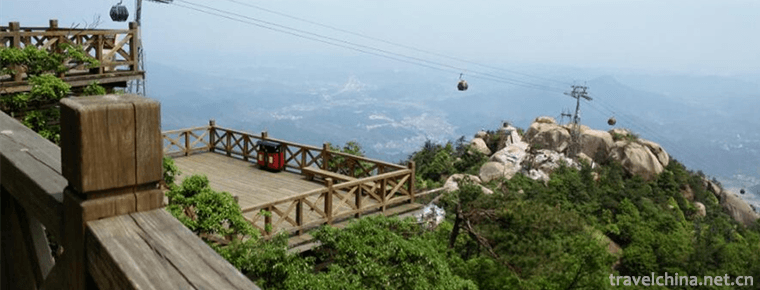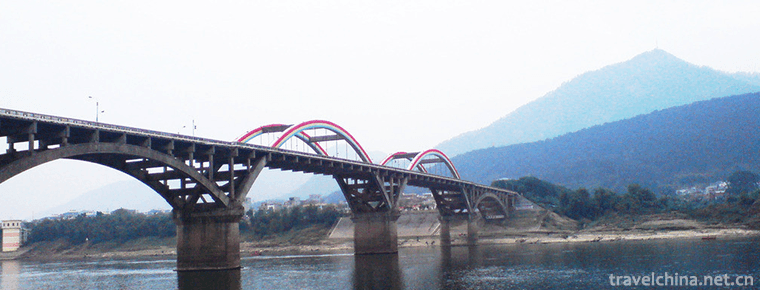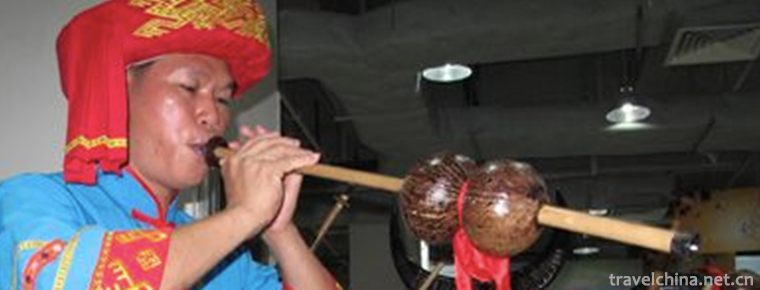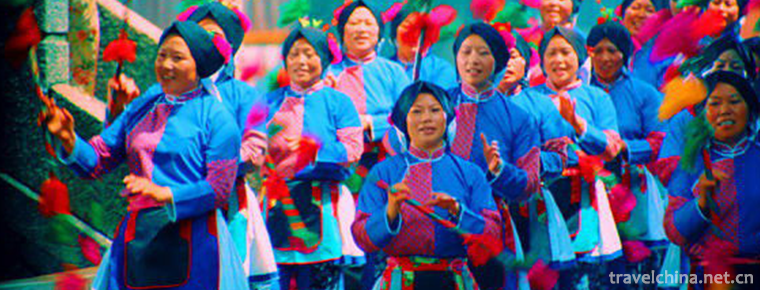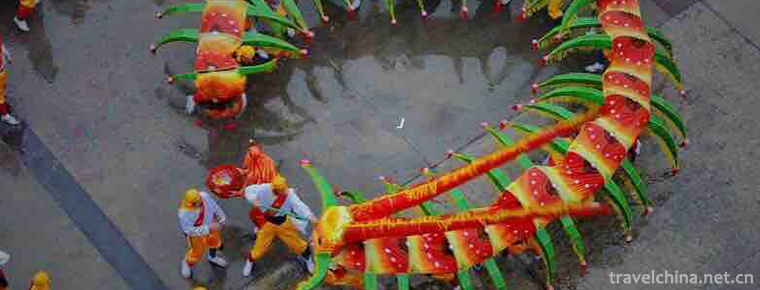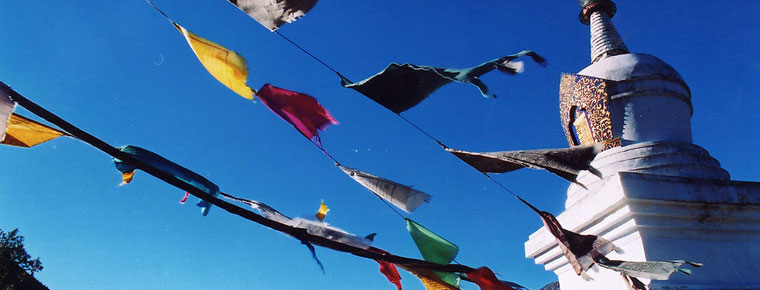qingdao olympic sailing center
qingdao olympic sailing center
Qingdao Olympic Sailing Center Scenic Spot is located in Fushan Bay, Qingdao City, and Qingdao's landmark scenic spot - May 4th Square offshore, covering an area of about 45 hectares. It is the venue for the 2008 Beijing Olympic Sailing Competition and the 29th Paralympic Sailing Competition. The Olympic Sailing Center Scenic Spot is the only "National Coastal Tourism and Leisure Demonstration Zone" in China.
Qingdao is known as "the capital of sailing boats". As the scenic spot that best reflects Qingdao's urban characteristics and city image, the Olympic Sailing Center scenic spot not only has the elegance of flying sails, but also has ten old scenic spots of Qingdao representing Yandao Autumn Tide, a new era of Qingdao landscape gull flying rainbow, and many thrilling entertainment experiences. It is a must-see scenic spot for tourists to come to Qingdao.
Scenic Spots
The Ouxiang Rainbow
Qingdao New Era Landscape Representative, the landmark ornamental spot of gull appreciation. Qingdao has the reputation of "Eastern China Migratory Bird Station". Every year, there are more than 100,000 seagulls coming to the island city for winter. Qingdao has carried out the "Operation to Retain Seagulls" for 20 years, which has increased the number of seagulls from 2000 to more than 100,000. It has become a new era landscape in Qingdao. On the rainbow bridge in the early morning, the blue sea sky, the seagulls flying, and the human gulls playing each other are beautiful!
A Blessing Lighthouse
The origin of the name of the prayer tower is that Qingdao people, who have been occupied by foreign enemies for many times, yearn for a peaceful and peaceful life. When the tower was first built, it mainly illuminated the way for fishermen to go home at night. Because the lighthouse stands in the sea and looks at the Taiping Mountain, it is more like the goddess of the sea praying for the peace of Qingdao people, so it was named the prayer lighthouse. The tower was rebuilt in 2006, 20.08 meters high, meaning the 2008 Olympic Games. It is also the coordinate of Qingdao Station for the large international sailing events (Cliber, International Limits, Volvo, etc.). However, people still hope that the city government and the Lighthouse of Qingdao Financial Center can continue to pray for the political and economic prosperity and development of Qingdao City.
Autumn Tide of Yandao
"Yandao Autumn Tide" is one of the ten old sceneries in Qingdao. Yaner Island stands out in the sea, and there are cliffs. Every autumn, the wind and waves are high and impact the cliffs, causing high waves to spew like snow. In the golden autumn season, whenever the south wind is strong and the astronomical tide is high, the ear-shaking sound of the waves can be heard in the distance. Before approaching, the waves are surging and rolling like ten thousand horses, the scene is very spectacular and amazing.
Walking in Valentine's Dam
The Olympic Sail Valentine's Dam is the Main Breakwater of the Olympic Sail Center. In the post-Olympic period, the municipal government devotes itself to the construction of the Valentine's Dam and a bar street in view of the pure scenery of walking here. When the lover strolls here, he can feel the uniqueness of the sea and sky, the romance of the blue sky and white tower, and the spectacular scene of the Olympic Sail Competition venue "thousands of sails, hundreds of rivalries". "Walk hand in hand through the Valentine's Dam, no matter how stormy it is!"
Olympic Humanistic Landscape Area
Charming Maritime Theatre
Spray and style outline China's first maritime theatre, known as "China's Sydney Opera House". The theatre uses high-tech means such as water curtain landscape, laser art, music fountain, sea music fireworks and city night scene brightening to create a large-scale live performance with Qingdao characteristics. The Maritime Theatre Dam is the starting point of the Chinese Navy's parade-style sea voyage. Most of the Chinese people stand at this dock to review the style and strength of the Chinese Navy.
Olympic Sail Museum
One of the three major Olympic museums in China. "Olympic Gallery, Sailing World, Award Presentation Stage" is the three major themes that can not be missed in the Olympic Sailing Museum. The Olympic Sailing Museum takes Olympic Sailing and Olympic Sailing Culture as its main line, and uses modern display means to form a large-scale national thematic museum with the interaction of indoor exhibitions and outdoor scenes.
Windbell Flag Array
The square set up by the flag of all countries at Gate 2 of the Olympic Sailing Center is the Flag Matrix Square, where the flags of all participating countries hang, symbolizing world friendship and peace, "One World, One Dream". There is also a five-ring sculpture with a three-dimensional sense, which symbolizes that athletes from all countries are motivated by the spirit of the Olympic Games, constantly making progress and winning good results. Stopping in the square, you can hear the wind bell burst, also known as the wind bell flag burst. In summer, the wind is fresh and cool. Listening to its sound can make people calm and refreshing. Experience the unique of Qingdao Olympic Sail by auditory way. Listen carefully to the voice of the wind bell. If you can hear a good rhythm, it will be good luck (rhyme).
Olympic Torch Dam
The sculpture stands at the end of the Olympic Memorial Wall pier 100 meters east of the entrance 1 of the Olympic Sailing Center. In the 2008 Olympic Sailing Competition, the torch of Paralympic Sailing Competition was burned in Qingdao, which was the torch ignited by the Olympic Sailing Competition at that time. The giant sculpture of the Olympic rings on the back is the most obvious and classical manifestation. The rings are located on the wharf deep in the sea and are the best place to commemorate the Olympic Games across the sea from the May 4th Square.
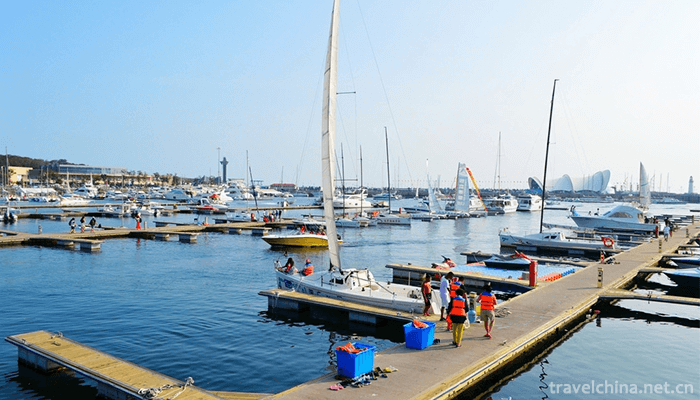

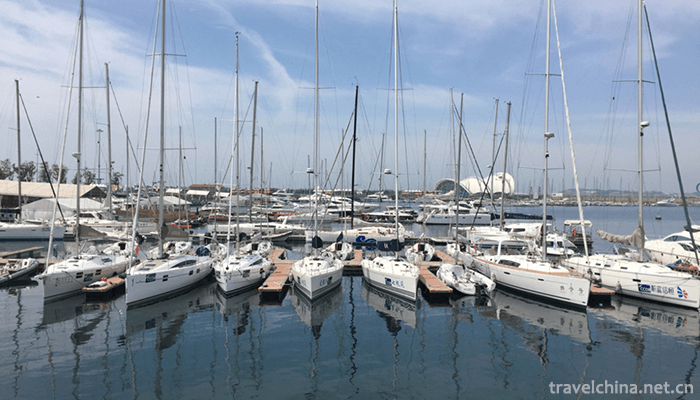
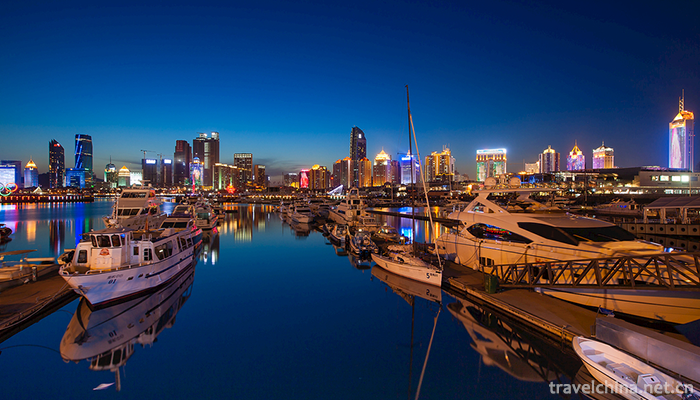
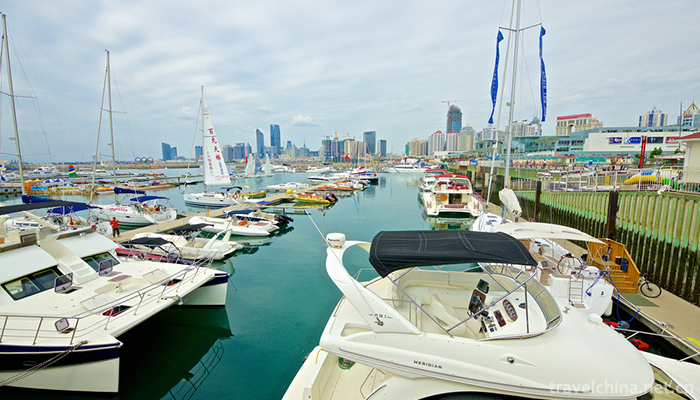

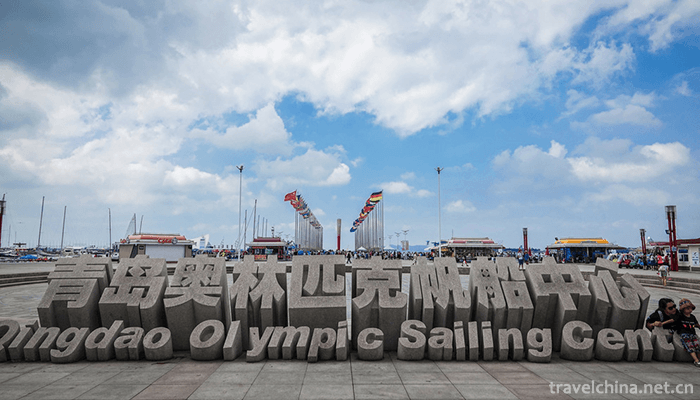

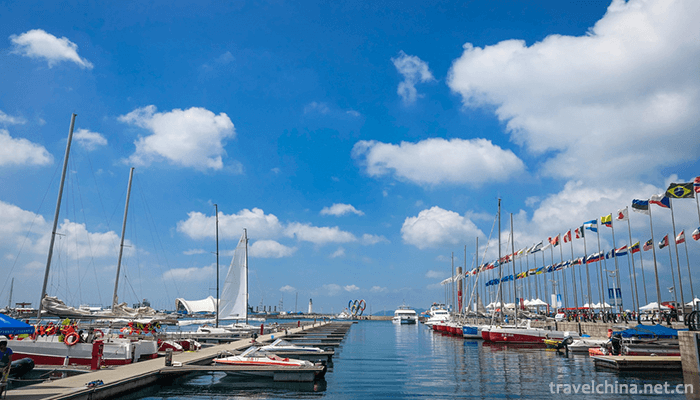
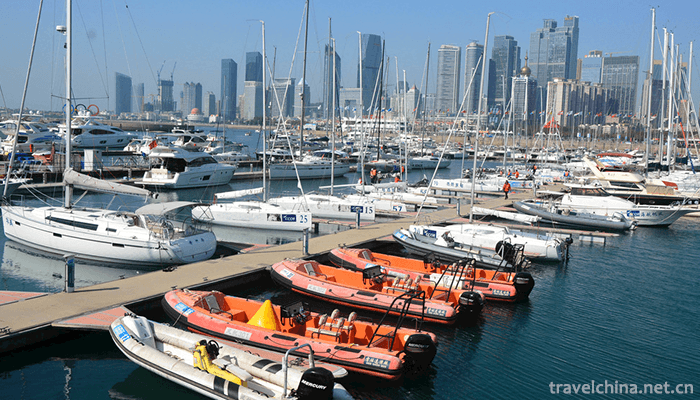
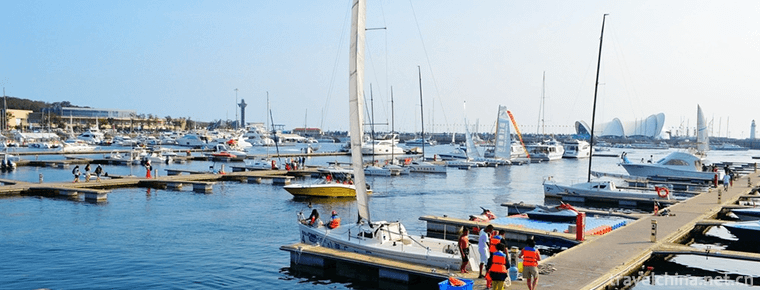
qingdao olympic sailing center
-
Longmen Grottoes Scenic Area
Longmen Grottoes is one of the treasure houses of Chinese stone carving art. It is now a world cultural heritage, a national key cultural relics protection unit and a national AAAAA class tourist attr
Views: 274 Time 2018-12-09 -
Shangrao Lingshan Scenic Area
Shangraolingshan Scenic Area, located in the north of Shangrao County, Shangrao City, Jiangxi Province, is a national scenic spot with an area of 160 square kilometers. Lingshan is listed as the "
Views: 140 Time 2018-12-19 -
West Mountain Scenic Spot of Guiping
Guiping Xishan Scenic Spot, National AAAA Scenic Spot, National Geopark. Located in Guiping City, southeastern Guangxi Zhuang Autonomous Region, Xishan Scenic Spots 1 km away from the outskirts of the
Views: 145 Time 2019-01-13 -
Panda Dance
Panda dance is a traditional dance originating in Jiuzhaigou County. Every year on the 15th and 16th of the first lunar month, some of the Baima Tibetans wear panda masks to exorcise evil spirits.
Views: 132 Time 2019-04-26 -
Bamboo and Wood Instrument Music of Li Nationality
The traditional instrumental music of Li Nationality is based on abundant bamboo and wood resources, including solo music, ensemble music, song and dance music, sacrificial music and eight kinds of mu
Views: 156 Time 2019-05-13 -
Womens clothing in Yongzhishui Townshi Suzhou
The women's clothing in Yongzhishui Township, Suzhou, is an outstanding representative of the Han nationality's clothing. It is a typical and representative clothing of the working people in Wu area.
Views: 300 Time 2019-06-17 -
Centipede dance
Centipede dance, Guangdong traditional folk dance. Originated from Tongzhi in Qing Dynasty to Guangxu, it was initiated by Chen Chengjin, a native of Ximen, and Shi Wenyong, a good friend. It is a squ
Views: 196 Time 2019-06-29 -
Bo Yan
Bo Yan (1236 - January 11, 1295), eight neighbouring people in Mongolia. Yuan Dynasty Famous ministers in early years
Views: 243 Time 2019-09-14 -
Muli Temple
Muli temple is a key cultural relics protection unit in Sichuan Province. It is located at the foot of daniyabu mountain, youyidian village, Taoba Township, Muli Tibetan Autonomous County. It is more than 300 kilometers away from Xichang City
Views: 296 Time 2020-10-16 -
Tibetan lads are really popular
Who is Ding Zhen? He is a Tibetan Boy, 20 years old. On November 25, a tourism propaganda film "Ding Zhen's world" made him popular all over the country. Netizens once thought that his hometown was in Tibet, and the photographer could not help but clarify that Ding Zhen was from Litang County, Ganzi, Sichuan Province.
Views: 122 Time 2020-12-07 -
Geomorphological characteristics of Mianyang
The terrain is high in the north and low in the south, and the height difference is large. The northwest of Mianyang City is located in the eastern edge of the Qinghai Tibet Plateau, with high terrain and overlapping peaks. The southwest part belongs
Views: 131 Time 2020-12-14 -
Historical evolution of Neijiang
Xia and Shang were Liangzhou, Zhou was Yongzhou, spring and autumn and Warring States were ba Jun and Shu Jun; Western Han Dynasty was Zizhou; Eastern Han Dynasty was Han'an county.
Views: 338 Time 2020-12-16

